

How Does a Caffeine Nap Work?
Our desire to sleep is dependent on two processes: homeostatic sleep drive and the circadian alerting signal. Sleep drive refers to the fact that the longer you’re awake, the sleepier you’ll become.
This is due to the accumulation of a chemical in the brain known as adenosine. Adenosine is a normal byproduct of metabolism. Our body cells use adenosine triphosphate as their main source of energy, with the leftover component being adenosine. The longer we stay awake, the more energy we use and the more adenosine accumulates in the brain.
Sleep is, for the most part, a way of clearing away the accumulated adenosine. By morning, after a good night’s sleep, the levels have decreased, and start increasing again with prolonged wakefulness. If you only manage four hours of sleep one night, you will wake up feeling tired still as you have not had sufficient time to clear out the adenosine. It’s important to recognize that even short periods of sleep may reduce adenosine levels. Therefore, a quick nap may reduce sleepiness and increase alertness.
When caffeine is coupled with a nap, these effects are enhanced. Caffeine independently works to block adenosine, the signal for sleepiness. This is how it acts as a stimulant and helps us feel more awake even if we haven’t slept. As a result, a caffeine nap pairs two interventions that are known to reduce tiredness. Research has demonstrated that this combination is more effective than either by itself at improving measures of alertness.
When Should You Take a Caffeine Nap?
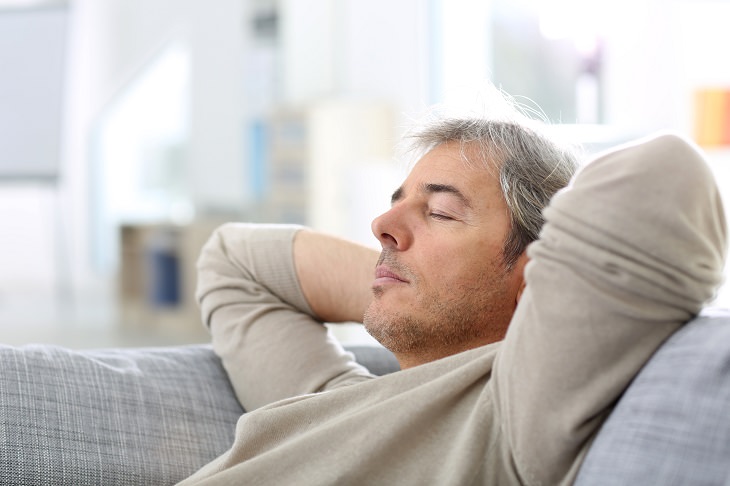
You should consider taking a caffeine nap when you feel extra tired during the day. For most of us, this may correspond with a natural dip in the circadian alerting signal that occurs in the afternoon, often between 1 and 3pm. Incidentally, this is why some societies observe siesta time in the early afternoon (which is often the hottest part of the day.
To avoid insomnia, it’s best to avoid taking a caffeine nap later in the day or near bedtime. Caffeine is metabolized by the liver, and about half of it will be eliminated in 5-6 hours, so you might want to avoid it beyond the later afternoon if you’re prone to insomnia.
Other Ways to Avoid Daytime Sleepiness
If you are always sleepy during the day, it’s probably due to inadequate sleep quality or quantity. Sleep deprivation will often occur in adults who get fewer than 7-8 hours of sleep per night. Try to get adequate hours of sleep at night, keeping your sleep schedule regular, and make sure to get 15-30 minutes of morning sunlight upon wakening.
Remember that caffeine is no substitute for sleep. Though it may mask the symptoms of sleepiness, the effects are temporary. Therefore, if you are routinely feeling sleepy during the day, you should go see a doctor to find out how your sleep can be improved.
Source: verywell
Images: depositphotos

Scientists Discover a New Benefit of Drinking Coffee
Your coffee drinking habit is healthier than you think. Scientists have recently discovered one more reason to enjoy a daily cup of coffee or two.

Alcohol Linked To More Cancer Types Than Previously Known
A new study found a clear correlation between alcohol consumption and more types of cancer than previously known.
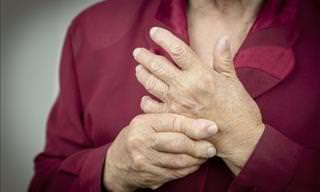
Do You Have Arthritis? These Tips Can Help Ease the Pain
Though you can’t always prevent arthritis, there are some things that you can do to help reduce your symptoms if you have it. Here are 8 of them!

Take a Daily Nap and Reap These Healthy Benefits...
Had a rough night? Here are 16 reasons to take a nap.

It's Easier to Beat a Caffeine Addiction Than You Think
Caffeine is addictive and beating a caffeine addiction can be difficult. However, these 10 effective tips ensure that this does not need to be the case!

The Do’s and Don’ts of Coffee Storage
The way you store your coffee is no less important than the kind you buy and the way you make it. So how can you ensure the perfect morning cup?
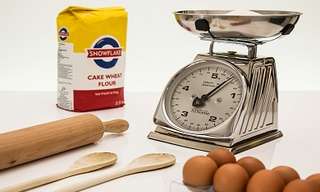
A Must Have Kitchen Cheat Sheet to Help With Any Recipe!
Simple fact sheets that will turn any cooking job easier to understand.
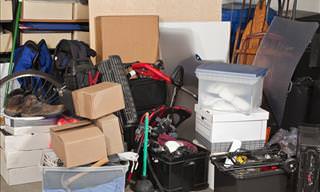
12 Clever Ways of Decluttering Your Home of All That Junk
Don't just throw away the junk you have at home, learn to reuse and recycle it the smart way with these 12 clever tips

40 Incredibly Useful Things You Can Do with Vinegar
Vinegar is one of the most useful materials in the house...
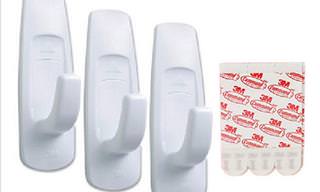 4:09
4:09
Amazing! How Can One Small Tool be So Useful?
18 brilliant ways to use Command Hooks. These will come in handy in the future.

19 Household Items You Need to Change Now
It's high time you change these household items.

We Bet You're Not Aware of These Real-World Facts
Don't miss this random collection of interesting real-world facts from the world over that you are unlikely to have heard before

How to Clean 'Dry Clean Only' Clothes at Home
Dry cleaning can be a huge hassle, as well as quite the expense, which is why it is so much better to do it yourself at home...

13 Household Items You Never Knew Had an Expiry Date
Take note. These common household products do go bad.
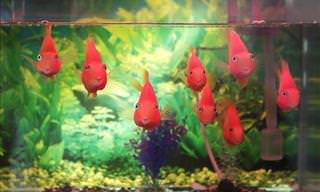
These 12 Colorful Fish Can Be Easily Kept In Your Home!
Whether you've always wanted to raise fish in your home aquarium or you already have one and you're looking for new varieties to add, this is the article for you!

Learn This Amazing Two-Step Fix For Scratched Furniture
You can give your scratched furniture a whole new lease of life by learning this super-easy two-step solution. Take a look.

11 Reasons Why Garlic Is a Gardener's Best Friend
Not only is garlic extremely tasty, but it is also very effective in the garden. Check out its uses here.

We Bet You Never Knew Rubbing Alcohol Was This Useful!
Most people use rubbing alcohol for cuts or to cool a fever, but it has so many other fantastic uses. Here's 15 of them.

10 Creative Ways to Create a Hanging Garden
Try your hand at vertical gardening with one (or a few) of these creative projects.
 9:13
9:13
If Food Has Ever Stuck To Your Pan, You Need This Tip
This video gives you 4 tips that ensure no food will ever stick to any of your pans.
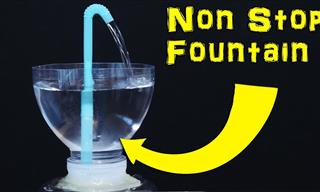 6:44
6:44
How to Build a Heron's Fountain That Runs Forever
Make your home a soothing sanctuary with this DIY non-stop water fountain.

Get Rid of Mosquitos in 5 Minutes with This DIY Recipe!
Let us help you significantly reduce the number of mosquitos in your home and garden with a simple 4-ingredient recipe of a mosquito trap
 3:38
3:38
This DIY Food Dispenser Will Transform Your Pet's Life!
A great way to ensure your pet is getting the right amount of food.
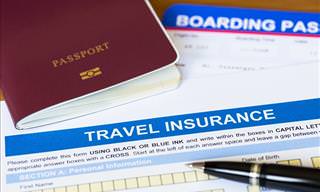
Here's All You Need to Know about Travel Medical Insurance
Planning a trip abroad? This guide will teach you everything you need to know about travel medical insurance!

Make Home-Made, Special Treats for Your Dog or Cat
Want to make sure your pet gets the healthiest treats without ant preservatives? Use these recipes to make your own treats. Your pet will thank you for it!
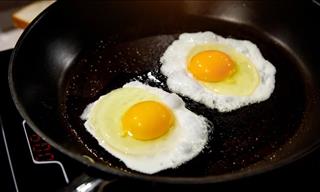 12:05
12:05
DO NOT Make These Mistakes When Frying an Egg
For a quick lesson in frying an egg, just watch this vidoe guide.

Try this Ancient Indian Method for Removing Body Hair
An ancient and natural method that both men and women have been using for centuries to get rid of unnecessary hair from their bodies.

62 Great Uses For Things You Have at Home!
If you keep finding random objects around your house such as rubber bands and old clothespins, don't throw them away just yet!

How Waking Up at 5.30am Will Change Your Life!
Find out how waking up at 5.30am will have a positive impact on your life.

19 Charts about Food and Cooking That Will Come in Handy
These food and cooking charts and guides can come in real handy someday!
 4:22
4:22
You Wouldn't Believe All That You Can Do with a Bobby Pin
You'll be surprised at how much you can truly do with a simple bobby pin! Take a look:
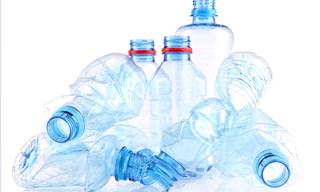 4:45
4:45
Whoa! I Never Knew an Empty Plastic Bottle was So Useful
When you've finished with the contents of a plastic bottle, don't throw the bottle away as it can be used for so many different things.

When Out Shopping, Avoid These 8 Generic Foods!
Generic foods are becoming more and more popular, but are they always a bargain? Here are 8 foods you should never buy generic.

Waking Up at Odd Hours? Here's What Your Body is Saying
This guide will help you understand how your body systems work and identify any mental challenges you may face.

The Best Plant Milks For Every Task
Different plant milks work best for various tasks, which can be tricky. This culinary guide will help you choose the best ones for you
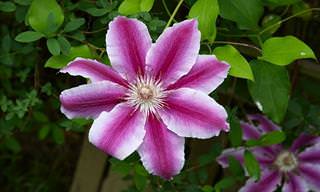
10 Poisonous Flowers Every Gardener Should Know About
Flowers add an array of color to your garden, but some of these are actually quite toxic. Here are 10 of that you should be aware of.
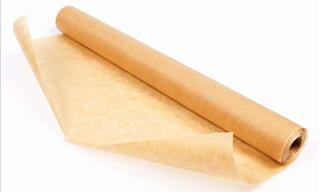
I Bet You've Never Thought of Using Wax Paper Like This!
There's so much you can do with wax paper. Here are 11 surprising uses.

5 Incredible Secrets 5-Star Hotels Use to Do the Laundry
Achieve outstanding results with these incredible laundry tips

Get Rid of Your Dog's Worms Using These 10 Home Remedies
At some point in their lives, most dogs will suffer from intestinal worms. Should this happen to your dog, here are 10 home remedies to help deworm them.

Plagued By Liver Spots? Here Are 9 Ways to Get Rid of Them
Skin spots are a reality for many of us and can often be a nuisance. But, fortunately, they can be lightened with these 9 natural ingredients.

13 Daily Objects We Could Be Using Better
You probably think you know how to use most of these objects already. Don't worry, all of us thought the same...
 1:43
1:43
How to Make a Delicious Watermelon Smoothie in 2 Minutes
Become the most innovative person at the picnic with this neat trick for perfect watermelon smoothies.
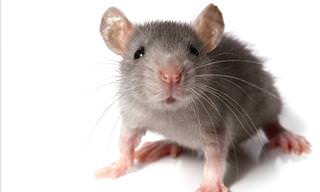
If You Have a Mouse Problem, This is How to Get Rid of It
If you have a mouse in your house there are many great (and humane) ways to get rid of it. Here are 6 of them.
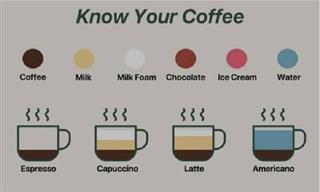
16 Useful Charts & Guides That Teach You Surprising Things
Save these useful charts and guides. They will come in handy someday.

I Never Imagined That I Could Use Cucumbers in These Ways
Take a look at the video below and see how cucumbers can help save you some money in 10 different ways.

Here's How You Can Declutter Your Home in Just One Month
If you're looking to declutter your home but don't know where to begin, these 12 tips might just help you out!
 2:57
2:57
Be Warned! This Battery Could Be a Danger to Your Home
If you use 9V batteries, you need to be aware of this vital information.


